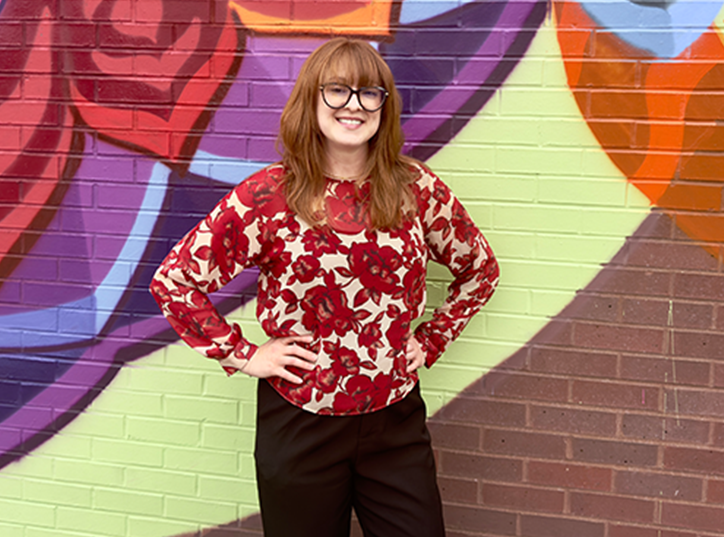From rural Missouri to the front lines: KCU student doctor’s unconventional path to medicine

When Megan Stacy applied to the police academy, it wasn’t part of some grand plan, it just felt right.
“I didn’t think they were going to accept me,” she laughs. “I just thought, why not?”
Raised in Nevada, Missouri, Stacy didn’t picture herself in medicine. But her career would evolve in ways she never expected, from patrol shifts and crime scenes to ambulances and eventually, medical school. Each step brought her closer to what she knows is her true calling.
Stacy began in law enforcement as a corrections officer, eventually completing the police academy and serving as a patrol officer in Gretna, Louisiana, a suburb of New Orleans, before a turning point came when she took on the additional role of crime scene investigation (CSI). It was here, working alongside medical examiners at the coroner’s office, that she found herself intrigued by the medical side of things.
“I was just fascinated by it all. I asked a lot of questions. What I didn’t realize is that they were teaching me medicine,” Stacy said.
Two medical examiners finally pulled her aside and said, ‘Megan, people don’t like being here this much. You could be a doctor.’” At 25, with no college background, the idea felt surreal, but the thought stuck. Within six months, she enrolled in her first undergraduate classes while continuing to work full-time.
A shift toward medicine
As balancing court dates and on-call CSI work became more difficult, Stacy shifted to EMS, encouraged by a supervisor who saw her growing interest in medicine. She earned her EMT certification and served as a police-EMT, responding to emergencies across the city.
“I liked the adrenaline and the unknowns,” she said. “Being there when someone really needed help, it just made sense.” She worked in EMS for six years, earning her bachelor’s degree in psychology along the way. It was during that time—especially during the emotional toll of the COVID-19 pandemic, that she made the leap to pursue medicine full-time.
Choosing Kansas City University
In 2022, Stacy began medical school at Kansas City University’s College of Osteopathic Medicine. She was drawn to its community-driven mission and quickly immersed herself in opportunities to serve.
“It’s never enough to just be in the moment in medicine,” Stacy said. “You’re always thinking ahead, to residency, to how you can make a real impact.” She joined the student-run clinic and found herself especially drawn to caring for Kansas City’s unhoused population, having developed a deep connection to people experiencing homelessness during her time in New Orleans.
Connecting medical education to community needs
Through her Master of Public Health (MPH) program at KCU, Stacy partnered with Hope Faith, Kansas City’s only low-barrier day shelter for the unhoused. She had volunteered there since her second year at KCU, but her role grew when she designed a full-scale needs assessment for her applied public health project.
“I talked to over a hundred people and almost all of them had health issues,” she said. “But nearly everyone said their number one concern was housing. Without a safe place to sleep, and food to eat, it’s impossible to focus on one’s health.”
Now in her third year of medical school, Stacy plans to pursue a career in emergency medicine, a specialty that fuses her past experiences with her purpose. “I like the controlled chaos,” she said.” There’s no time to judge—just help.”
She also sees herself stepping into public health leadership, perhaps even working with local government or emergency preparedness planning. Her MPH concentration in emergency planning ties directly into her vision for systemic change—especially for vulnerable populations.
“So much of this work is about visibility,” Stacy said. “About taking the time to really see people.”
Stacy remains driven by the same principle that inspired her to pursue medicine in the first place: being there when it counts, and making sure no one is overlooked.
